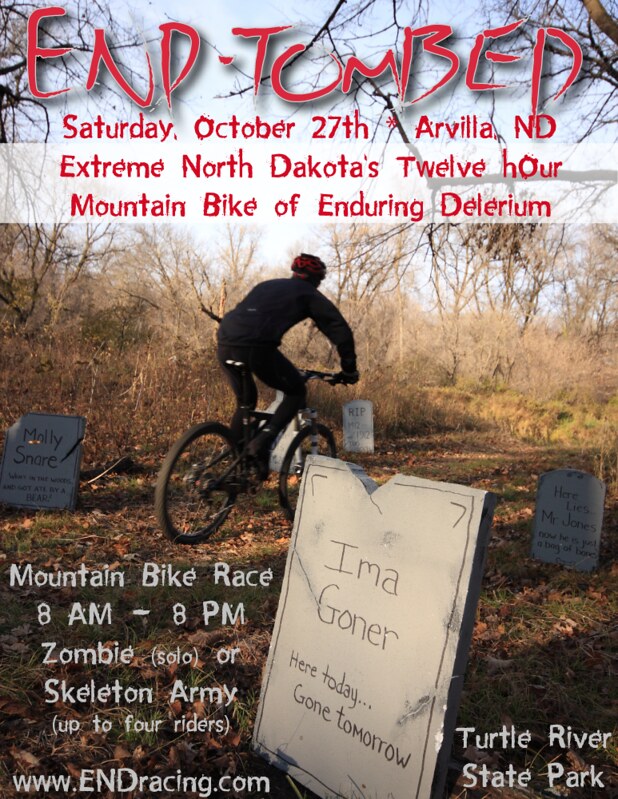If you are looking for the official Sample Data for GPlates, included automatically with the Linux installation but not for OS X or Windows, it is available from the Sourceforge site.
GPlates 1.2 download folder – gplates-1.2-sample-data.zip
I am including a list of files here (below the break) in case others like me were wondering where they got some data. I am not responsible for these data, I just needed to re-download them and couldn’t find the source.
SampleData
CptFiles
DataBundleForNovices
FeatureCollections
LICENSE.txt
Rasters
contents.txt
./CptFiles:
feature_age.cpt
isochrons_and_ridges.cpt
plate_id_categorical.cpt
plate_id_regular.cpt
./DataBundleForNovices:
Global_EarthByte_GPlates_Coastlines_20111013.gpml
Global_EarthByte_GPlates_Coastlines_GridMarks_20110624.gpml
Global_EarthByte_GPlates_PresentDay_COBs_20110610.gpml
Global_EarthByte_GPlates_PresentDay_Isochrons_20100927.gpml
Global_EarthByte_GPlates_PresentDay_Ridges_20100927.gpml
Global_EarthByte_GPlates_Rotation_20100927.rot
README
./FeatureCollections:
COBs
Coastlines
Isochrons
Palaeomagnetism
Rotations
SpreadingRidges
StaticPolygons
./FeatureCollections/COBs:
Global_EarthByte_GPlates_PresentDay_COBs_20110610.dat
Global_EarthByte_GPlates_PresentDay_COBs_20110610.gpml
Global_EarthByte_GPlates_PresentDay_COBs_20110610.xy
README
Shapefile
./FeatureCollections/COBs/Shapefile:
Global_EarthByte_GPlates_PresentDay_COBs_20110610.dbf
Global_EarthByte_GPlates_PresentDay_COBs_20110610.prj
Global_EarthByte_GPlates_PresentDay_COBs_20110610.shp
Global_EarthByte_GPlates_PresentDay_COBs_20110610.shp.gplates.xml
Global_EarthByte_GPlates_PresentDay_COBs_20110610.shx
./FeatureCollections/Coastlines:
Global_EarthByte_GPlates_Coastlines_20111013.dat
Global_EarthByte_GPlates_Coastlines_20111013.gmt
Global_EarthByte_GPlates_Coastlines_20111013.gpml
Global_EarthByte_GPlates_Coastlines_20111013.xy
Global_EarthByte_GPlates_Coastlines_GridMarks_20110624.dat
Global_EarthByte_GPlates_Coastlines_GridMarks_20110624.gpml
Global_EarthByte_GPlates_Coastlines_GridMarks_20110624.xy
README
Shapefile
./FeatureCollections/Coastlines/Shapefile:
Global_EarthByte_GPlates_Coastlines_20111013.dbf
Global_EarthByte_GPlates_Coastlines_20111013.prj
Global_EarthByte_GPlates_Coastlines_20111013.sbn
Global_EarthByte_GPlates_Coastlines_20111013.sbx
Global_EarthByte_GPlates_Coastlines_20111013.shp
Global_EarthByte_GPlates_Coastlines_20111013.shp.gplates.xml
Global_EarthByte_GPlates_Coastlines_20111013.shp.xml
Global_EarthByte_GPlates_Coastlines_20111013.shx
./FeatureCollections/Isochrons:
Global_EarthByte_GPlates_PresentDay_Isochrons_20100927.dat
Global_EarthByte_GPlates_PresentDay_Isochrons_20100927.gpml
Global_EarthByte_GPlates_PresentDay_Isochrons_20100927.xy
README
Shapefile
./FeatureCollections/Isochrons/Shapefile:
Global_EarthByte_GPlates_PresentDay_Isochrons_20100927_polyline.dbf
Global_EarthByte_GPlates_PresentDay_Isochrons_20100927_polyline.prj
Global_EarthByte_GPlates_PresentDay_Isochrons_20100927_polyline.shp
Global_EarthByte_GPlates_PresentDay_Isochrons_20100927_polyline.shp.gplates.xml
Global_EarthByte_GPlates_PresentDay_Isochrons_20100927_polyline.shx
./FeatureCollections/Palaeomagnetism:
LICENSE.txt
README
gpml
vgp
./FeatureCollections/Palaeomagnetism/gpml:
Europe2004_RM_Npoles.vgp.gpml
Gondwana2010_RM_NPoles.vgp.gpml
Laurussia2010_RM_NPoles.vgp.gpml
NorthAmerica2004_RM_Npoles.vgp.gpml
./FeatureCollections/Palaeomagnetism/vgp:
Europe2004_RM_Npoles.vgp
Gondwana2010_RM_NPoles.vgp
Laurussia2010_RM_NPoles.vgp
NorthAmerica2004_RM_Npoles.vgp
./FeatureCollections/Rotations:
Global_EarthByte_GPlates_Rotation_20100927.rot
Global_EarthByte_PlateIDs_20071218.pdf
./FeatureCollections/SpreadingRidges:
Global_EarthByte_GPlates_PresentDay_Ridges_20100927.dat
Global_EarthByte_GPlates_PresentDay_Ridges_20100927.gpml
Global_EarthByte_GPlates_PresentDay_Ridges_20100927.xy
README
Shapefile
./FeatureCollections/SpreadingRidges/Shapefile:
Global_EarthByte_GPlates_PresentDay_Ridges_20100927.dbf
Global_EarthByte_GPlates_PresentDay_Ridges_20100927.prj
Global_EarthByte_GPlates_PresentDay_Ridges_20100927.shp
Global_EarthByte_GPlates_PresentDay_Ridges_20100927.shx
./FeatureCollections/StaticPolygons:
Global_EarthByte_GPlates_PresentDay_StaticPlatePolygons_20111012.gmt
Global_EarthByte_GPlates_PresentDay_StaticPlatePolygons_20111012.gpml
Global_EarthByte_GPlates_PresentDay_StaticPlatePolygons_20111012.xy
Shapefile
./FeatureCollections/StaticPolygons/Shapefile:
Global_EarthByte_GPlates_PresentDay_StaticPlatePolygons_20111012.dbf
Global_EarthByte_GPlates_PresentDay_StaticPlatePolygons_20111012.prj
Global_EarthByte_GPlates_PresentDay_StaticPlatePolygons_20111012.sbn
Global_EarthByte_GPlates_PresentDay_StaticPlatePolygons_20111012.sbx
Global_EarthByte_GPlates_PresentDay_StaticPlatePolygons_20111012.shp
Global_EarthByte_GPlates_PresentDay_StaticPlatePolygons_20111012.shp.gplates.xml
Global_EarthByte_GPlates_PresentDay_StaticPlatePolygons_20111012.shp.xml
Global_EarthByte_GPlates_PresentDay_StaticPlatePolygons_20111012.shx
./Rasters:
DNSC08GRA_6m.gpml
DNSC08GRA_6m.jpg
Time-dependent raster sequences
agegrid_6m.gpml
agegrid_6m.nc
agegrid_6m.nc.aux.xml
color_etopo1_ice_low.gpml
color_etopo1_ice_low.jpg
./Rasters/Time-dependent raster sequences:
dynamic topography
./Rasters/Time-dependent raster sequences/dynamic topography:
LICENSE.txt
README.txt
jpg
./Rasters/Time-dependent raster sequences/dynamic topography/jpg:
credits.txt
dynto-0.jpg
dynto-1.jpg
dynto-10.jpg
dynto-100.jpg
dynto-11.jpg
dynto-12.jpg
dynto-13.jpg
dynto-14.jpg
dynto-15.jpg
dynto-16.jpg
dynto-17.jpg
dynto-18.jpg
dynto-19.jpg
dynto-2.jpg
dynto-20.jpg
dynto-21.jpg
dynto-22.jpg
dynto-23.jpg
dynto-24.jpg
dynto-25.jpg
dynto-26.jpg
dynto-27.jpg
dynto-28.jpg
dynto-29.jpg
dynto-3.jpg
dynto-30.jpg
dynto-31.jpg
dynto-32.jpg
dynto-33.jpg
dynto-34.jpg
dynto-35.jpg
dynto-36.jpg
dynto-37.jpg
dynto-38.jpg
dynto-39.jpg
dynto-4.jpg
dynto-40.jpg
dynto-41.jpg
dynto-42.jpg
dynto-43.jpg
dynto-44.jpg
dynto-45.jpg
dynto-46.jpg
dynto-47.jpg
dynto-48.jpg
dynto-49.jpg
dynto-5.jpg
dynto-50.jpg
dynto-51.jpg
dynto-52.jpg
dynto-53.jpg
dynto-54.jpg
dynto-55.jpg
dynto-56.jpg
dynto-57.jpg
dynto-58.jpg
dynto-59.jpg
dynto-6.jpg
dynto-60.jpg
dynto-61.jpg
dynto-62.jpg
dynto-63.jpg
dynto-64.jpg
dynto-65.jpg
dynto-66.jpg
dynto-67.jpg
dynto-68.jpg
dynto-69.jpg
dynto-7.jpg
dynto-70.jpg
dynto-71.jpg
dynto-72.jpg
dynto-73.jpg
dynto-74.jpg
dynto-75.jpg
dynto-76.jpg
dynto-77.jpg
dynto-78.jpg
dynto-79.jpg
dynto-8.jpg
dynto-80.jpg
dynto-81.jpg
dynto-82.jpg
dynto-83.jpg
dynto-84.jpg
dynto-85.jpg
dynto-86.jpg
dynto-87.jpg
dynto-88.jpg
dynto-89.jpg
dynto-9.jpg
dynto-90.jpg
dynto-91.jpg
dynto-92.jpg
dynto-93.jpg
dynto-94.jpg
dynto-95.jpg
dynto-96.jpg
dynto-97.jpg
dynto-98.jpg
dynto-99.jpg
dynto.gpml

